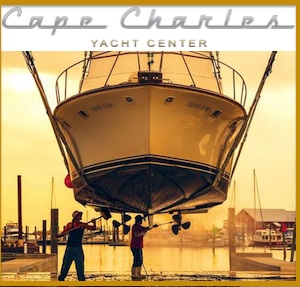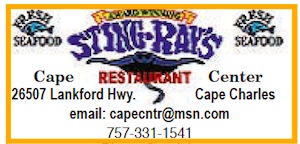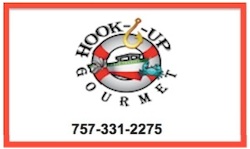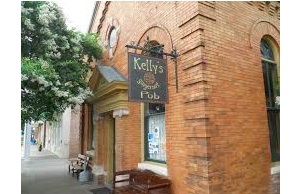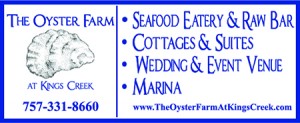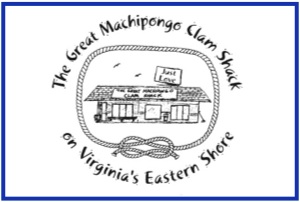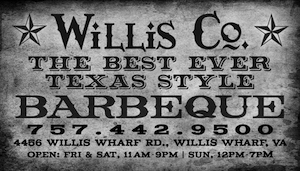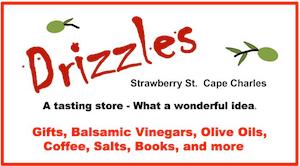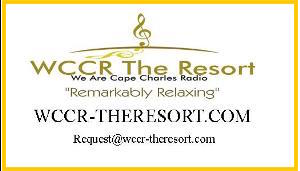ORAL HISTORY: Sinking Ships, Ice Breakers
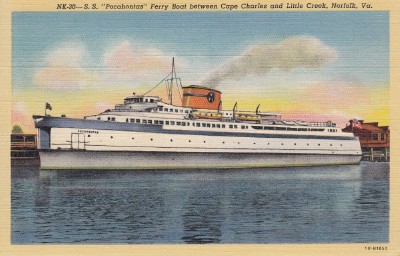
Pocahontas ferryboat steamed between Cape Charles and Norfolk, captained by Bill Evans.
March 3, 2014
(EDITOR’S NOTE: Cape Charles Historical Society has for more than a decade been recording oral histories of the area’s earlier days. In 2006, Bill and Jan Neville interviewed the late Capt. Bill Evans. A grant from the Virginia Foundation for the Humanities enabled 15 interviews to be transcribed, and the Historical Society has made this one available for readers of the Wave. All the transcriptions may be read at the Cape Charles Museum.)
Excerpts from a March 31, 2006, interview by Bill and Jan Neville of Ferryboat Capt. Bill Evans and his wife, Grace.
PART 4
CONCRETE SHIPS CONTINUED, BREAKING CHESAPEAKE ICE
You mentioned Les Morgan. What were some of the other captains?
Captain Morgan. Captain Stone, he was a head captain, Captain Justin Stone. There was a Captain Daniels, too, George Daniels. He was from the Norfolk side. They eventually took him off the boat and put him port captain. And then there was Frank — they took him off the boat and made him port engineer. And there was a Nolan Chandler, he was an engineer at one time, and they put him out there as superintendent.
Who was Stanley Lewis? Was he a captain?
Stanley Lewis? He was a captain.
Wilbur Brownley, do you know him? Ed Forrest?
I’ve heard of Brownley but don’t know him. Ed Forrest was a railroad guy. And Brownley, seems like he was railroad, too.
Those concrete ships. Were they WWI or WWII surplus? Did they have a name for them?
Oh, they’re from World War II. They carried freight. I only know them as concrete ships.
I had a friend out in the Pacific in WWII and he said when a Japanese bomb would hit one of those things the air was full of concrete chips shooting all over and the other ships would have to duck. It wasn’t shrapnel, it was concrete chunks coming at you. How did they get from Texas?
They towed them up here. They were floated.
How did you sink them?
That was easy!
Did they dynamite them?
What we did, we took them in there, put them in their place, then we pumped them full of water, each one of them, and put them on the bottom. Then we brought a dredge in and dredged all that out inside of the harbor and put all that dredging in there — in the ships. That settled the ships and that’s how they stayed there. It’s been a mystery to me, because when they first took those ships over there by law if the Virginia Ferry ever went out of business, or moved, they had to move the concrete ships. But it so happened, before the Virginia Ferry went out of business, the State took the ferries over. That’s prior to building the Bridge-Tunnel. So they got by with that one. So the concrete ships are still there. [Read more…]
ORAL HISTORY: Concrete Ships at Kiptopeke

Pocahontas ferryboat steamed between Cape Charles and Norfolk, captained by Bill Evans.
February 24, 2014
(EDITOR’S NOTE: Cape Charles Historical Society has for more than a decade been recording oral histories of the area’s earlier days. In 2006, Bill and Jan Neville interviewed the late Capt. Bill Evans. A grant from the Virginia Foundation for the Humanities enabled 15 interviews to be transcribed, and the Historical Society has made this one available for readers of the Wave. All the transcriptions may be read at the Cape Charles Museum.)
Excerpts from a March 31, 2006, interview by Bill and Jan Neville of Ferryboat Capt. Bill Evans and his wife, Grace.
PART 3
THE CONCRETE SHIPS AT KIPTOPEKE
[Grace]: Don’t forget to tell them what you did at Kiptopeke. The ships! The concrete ships!
I put them there. We had them towed up from Beaumount, Texas, both of them. And I had several that were already up there in ‘Squito Creek off Newport News. And anyway, they brought them all to Newport News anchorage and I had to go over there and bring them to Kiptopeke. I towed them with my tanker, my oil tanker.
That was called the “Kiptopeke” wasn’t it? The oil tanker’s name?
Yeah. Well me and another tug, we towed them on over there and put them in their place. Where they were supposed to be. In fact, what we done, we put them over there and I remember the last one we brought over, it was kind of getting dark, so we made it fast to the last upper end and we tied up alongside the ships, caught a nap. Said next morning we’ll sink it when it’s daylight. Got up the next morning and I start easing down and I saw the ship was gone! She drifted away and the wire cable I used to make her fast to the other ship, was laying down there in the water. Oh my goodness, that ship is out there and in the shipping lane and it’s a dead ship and concrete, oh boy! So we sailed along. We checked along the shore first and we found her up on the beach. Up toward Cape Charles. So we hooked on her and brought her back.
[Grace]: He said furniture and everything was still on those ships.
Yeah, a lot of things, tools —
[Grace]: Did you say they had a party on one of them?
Oh yeah. That was the first one up. They had that fixed up so you could have parties on that. That was Chandler and all that gang. . . . They had plenty of booze. That was a boozin’ gang.
[Grace]: Tell them about the hurricane and what happened during the hurricane at Kiptopeke.
Oh that was Hurricane Hazel. I was on the Pocahontas and we were coming across and they called me from Little Creek and told me tie up when you get to Kiptopeke. The storm just hit Cape Henry. So I went in there and tied up the number 2 bridge and unloaded. Just about the time I got unloaded, that wind struck. I put out nine 9″ dual lines to hold the bow and that broke everyone of them just like a shoe string.
Good grief!
I blew right around and I blew up on the beach. I tried to get out, I was going to try to get out through that hole, but it’s a good thing I didn’t because that would have blew me against the concrete for sure. So what I done, I wound up on the beach. And I said, oh me, here I am stuck. I won’t be able to get me off here. But they got railroad tugs over that night about midnight and got her back out. But anytime you touch bottom you have to take her to the shipyard. So that night I took her on up to the shipyard. Hauled her out, not a bit of damage at all, just a paint that was scraped off where she was riding on the bottom. So they cleaned her up and we were back out the next day. That was the Pocahontas. [Read more…]
ORAL HISTORY:
Bridegroom Goes Overboard From Ferryboat

Pocahontas ferryboat steamed between Cape Charles and Norfolk, captained by Bill Evans.
February 17, 2014
(EDITOR’S NOTE: Cape Charles Historical Society has for more than a decade been recording oral histories of the area’s earlier days. In 2006, Bill and Jan Neville interviewed the late Capt. Bill Evans. A grant from the Virginia Foundation for the Humanities enabled 15 interviews to be transcribed, and the Historical Society has made this one available for readers of the Wave. All the transcriptions may be read at the Cape Charles Museum.)
Excerpts from a March 31, 2006, interview by Bill and Jan Neville of Ferryboat Capt. Bill Evans and his wife, Grace.
PART 2
SUBMARINES IN WORLD WAR II
I do remember being outside . . . and my boat had broke down and couldn’t get out and I had to wait for her to get straightened out. But I was concerned then about those submarines coming in when we were laying out there right off the Capes. We were dead in the water, just laying there.
Were you anchored or were you just drifting?
We were drifting. Those anchors, you might get them overboard, but you’d never get them back! We never did drop anchor.
I bought a foghorn that it said it came off one of the ferries. It was in a wooden box and it had a handle along the side there. And I asked you if they really used them on the ferries.
That was in emergency. In case you lost your steam out there in the fog and had to have a foghorn, then you used that.
They said you kept it right up there under the pilot house.
That was one of the requirements. You had to carry a foghorn and kerosene sidelights and all of that. That was mandatory. In fact, the Coast Guard when you had your inspections, we had a yearly inspection and then we had a quarterly inspection. That was one of the first things they would call for is your emergency equipment.
I don’t know how this guy in Lewes ended up with it. But then again, the ferries left Kiptopeke and went to Lewes, right? And you moved, did you go to Lewes or –
I went to Cape May. Me and Mr. Chandler and Parker Drummond. Nolan Chandler, he went up there as superintendent, but he was superintendent down here. So they hired him and me and Parker Drummond. I went up there, of course, as captain and he went up there as forward engineer.
Yeah, I went up there as captain, good salary, too.
(Grace) They offered him a job on the bridge.
Yeah. But I told the head of the Bridge-Tunnel, I just couldn’t see myself waving traffic through that tunnel! So we wound up in Cape May.
Getting back to World War II. I remember you telling me about some skirmishes on the boat, maybe it wasn’t during the war. Some sailors and some woman was involved and they got to fighting and they had to call the cops. Does that ring a bell?
Yeah, that does ring a bell. It was Dance Night. See, you had dances on there Wednesday nights and Saturday nights. And these two got fighting over this woman. This one woman danced with this man and the other man was her boyfriend and they wound up fighting. So before I got back to Little Creek, I called the police and they met us at the docks and picked them up. [Read more…]
VIDEO: 2014 February Freeze at Cape Charles Beach
CAPE CHARLES WAVE
February 10, 2014
A bumper crop of cold-water crazies turned out for Saturday’s 2014 Habitat for Humanity February Freeze at the Cape Charles Beach. Watch the video to see who gets the wettest, and keep a sharp eye out for Kiptopeke Elementary Principal Subrina Parker. As always, swim instructor/polar bear Victor Abrahamian spent the longest time in the water (and actually “swam” a few strokes at the finish). Click bottom right of box for full-screen view (but don’t get wet!).
ORAL HISTORY: Capt. Bill Evans Recalls Ferryboat Days
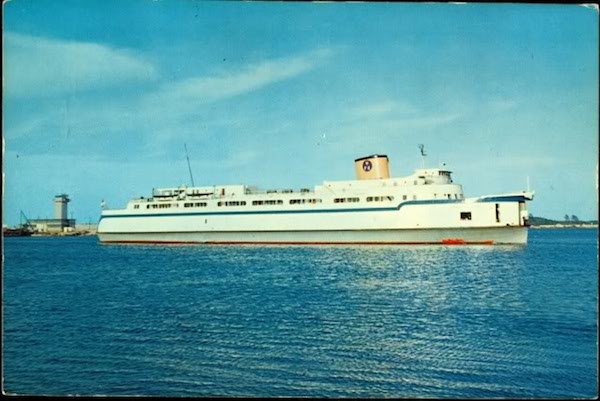
1950s post card of the Princess Anne steam ferry departing Norfolk for Cape Charles. This was where Capt. Bill Evans got his start as an ordinary seaman — “as low as you could get.”
February 10, 2014
(EDITOR’S NOTE: Cape Charles Historical Society has for more than a decade been recording oral histories of the area’s earlier days. In 2006, Bill and Jan Neville interviewed the late Capt. Bill Evans. A grant from the Virginia Foundation for the Humanities enabled 15 interviews to be transcribed, and the Historical Society has made this one available for readers of the Wave. All the transcriptions may be read at the Cape Charles Museum.)
Excerpts from an interview with Bill and Jan Neville, March 31, 2006
PART ONE
Today is March 31st, 2006, and we’re talking with Captain Evans, his lovely wife, Grace is here with us, as is my brother, Junius, aka Jan. I don’t know where to start. I guess one of the things I was curious about, did you grow up around here?
No, I come from Pennsylvania. From the coal mines. Shamokin — that’s an Indian name.
(Grace): Tell them what you were in Pennsylvania. Weren’t you known as a bootlegger?
Yeah, I was a bootlegger in Pennsylvania. You go up in the mountains, you dig a hole and you go down and get the coal out. You’re a bootleg coal miner.
My brother-in-law is a coal miner in western Virginia. I didn’t know you mined coal!
My grandfather and my uncles, they were coal miners, authentic coalminers. I was a bootlegger.
When did you come here?
I come here the first day of January, 1938. I was 18 years old. My stepfather had married my mother and they lived in Shamokin for a while and then he decided to come down here. He took my mother and I went to Baltimore and got a job there on a riveting gang. And got laid off there and I started looking for another job and my mother told me to come on down here. So I come down here and that’s how I ended up down here. Yes, my stepfather was from Cape Charles. His name was Bernice Ward. I come down here and I wound up cutting wood for the house. They come got me one day and told me I had a job on the ferry. But come to find out my father’s father had spoke to one of the captains on the boat and that’s how I got the job.
Inside track! So where did you start out on the boat?
Just as low as you could get! Ordinary seaman. I had to get a lifeboat ticket first. Which I did. You had to have a year’s time on deck to get the lifeboat ticket.
So what did that qualify you to do?
A steamboat had to have so many men that had lifeboat tickets. We were a passenger ferry. That qualifies you to operate a lifeboat with a crew. You were in charge of the lifeboat.
What was the first steamer you worked on?
The Princess Anne. I started out on the Princess Anne. But the one I worked on the most was the Pocahontas. [Read more…]
DINING: Eastville Inn Adds Imagination to Tradition

Creamy Mascarpone Laced Polenta (Photos by Clarice MacGarvey)
By CLARICE MACGARVEY
Cape Charles Wave
February 3, 2014
If your palate enjoys surprises, put Chef Brent Schmidt and the Eastville Inn on your dining radar. The historic Inn, built in 1724, began life as a roadside Coach House in Colonial times, offering overnight accommodations as well as dining for travelers. Today, the sprawling hotel bedrooms located on the upper story of the Inn are closed. The primary floor, consisting of a large main dining room, a smaller, more private dining space, and a cozy lounge, is very much open—providing an upscale dining experience that is rare on the Eastern Shore.
Chef Schmidt, a native of Hampton Roads with strong family ties to the Shore, took over this landmark facility in June 2013, updating the décor and adding high-top tables, a bar, and bar seating to the rear lounge overlooking the Colonial herb garden. The lounge area previously served as a display room for artifacts found in or near Eastville, showcasing the Shore’s legacy as one of Virginia’s earliest shires. The artifacts can now be viewed in the spacious entry hall, making space in the lounge for a comfy sofa and chair for chatting or enjoying a pre-dinner cocktail. The Inn’s bar serves a full range of popular cocktails and specialty martinis (try the Flirtini or Spiced Pear) along with champagnes and some very nice wines from Australia, Italy, New Zealand, Argentina, California, and the Shore’s own local winery, Chatham Vineyards.
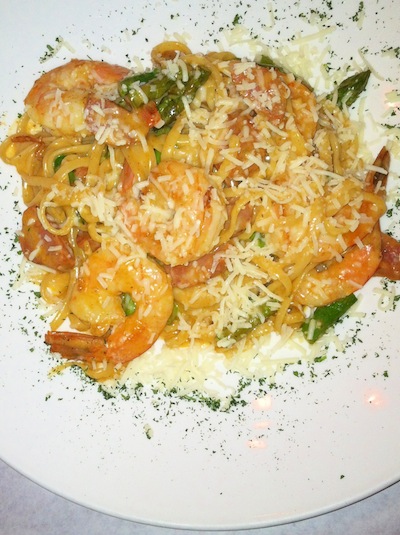
Pan seared prawns
As an historic landmark, on the National Register of Historic Places, the Inn must maintain authenticity in specific areas of décor and structural detail. This includes draperies and wall paint color tones. Schmidt has added counterpoint to the Inn’s soft yellow walls with rich burgundy table linens and a collection of nicely hung art by local artists. With the warm wood flooring and pristine white molding and support pillars, the dining room fully evokes Southern hospitality. And the friendly, well-trained staff delivers on that promise.
I have been to the Inn multiple times, and on each visit have discovered a new taste sensation. Schmidt is a talented and imaginative chef with a real knack for unexpected flavor pairings, including his soup and appetizer creations. On my last visit, a chilly Saturday night in mid-January, the soup du jour was “Loaded Potato,” a rich and hearty blend of potato, apple wood-smoked bacon, corn, and spinach. It was pleasantly seasoned, appropriately thick and creamy, and topped with Cheddar-Jack cheese and sour cream. Also popular is Schmidt’s “not so traditional” French Onion Soup, with a unique base that delivers a nice flavor twist. [Read more…]
1999 BALTIMORE SUN: Real Estate, Development Boom Reawakens Cape Charles
February 3, 2014
EDITOR’S NOTE: The story below appeared 15 years ago this week in the Baltimore Sun. On its anniversary, the Wave is highlighting it as one more intriguing look from a “back to the future” perspective.
By CHRIS GUY
Baltimore Sun
February 07, 1999
CAPE CHARLES, Va. — More than a century after two railroad men from up north put the place on the map — literally — the future is beginning to look a lot like the past in this bay-front town near the southern tip of Delmarva.
“For Sale” signs are sprouting on residential and commercial properties, and newcomers are snapping up second homes, investment properties and rentals so fast that local real estate agents can barely keep up.
There’s not a block among the perfectly square 644 lots laid out in 1883 by New York, Pennsylvania & Norfolk Railroad executive William L. Scott that hasn’t attracted interest.
Isolated for years by a $10 one-way toll to make the 30- to 40-minute trek across the Chesapeake Bay Bridge-Tunnel to Norfolk, Virginia Beach and other Hampton Roads cities, the southernmost town on the Delmarva Peninsula is no longer a secret.
Cape Charles’ pristine Chesapeake Bay beach and stately late-Victorian homes are drawing increasing numbers of well-heeled investors looking for weekend getaways, says Kim Starr, a New Jersey native who first came to Virginia’s Eastern Shore 15 years ago.
The weekenders are coming not only from the Hampton Roads area, about 25 miles away, but also from Baltimore, about 205 miles away.
“People say that the bridge-tunnel toll is our serenity tax,” says Starr, who [formerly was] married to six-term Town Councilman Frank Wendell. “It has kept us from becoming a bedroom community of Virginia Beach. But more recently, people have discovered that despite the toll, we have the benefit of living in a small town that’s just a hop, skip and a jump from a major metropolitan area — the best of both worlds.”
Investors willing to take a chance have found Cape Charles a good risk, Starr says, citing a Charlottesville, Va., couple — both lawyers — who bought two small homes for about $83,000, then sold them for $132,000 in just a few months. The couple used the profit to buy a second home close to the town’s public beach.
After decades of decline that left Cape Charles a ragged shell of the booming rail, steamship and ferry hub that once was the Virginia Shore’s most important town, business and community leaders say their newfound optimism is fueled by more than a surging real estate market.
The bed-and-breakfast inns, restaurants and shops that have opened in the past few years have provided a boost, merchants say. But it is an innovative “eco-industrial park” and a nearly 2,000-acre golf course community, conference center and resort that will soon lift Cape Charles and Northampton County — one of Virginia’s poorest — into prosperity not seen since the town’s pre-World War II heyday, supporters say. [Read more…]
VIDEO: Cape Charles Snow Day
January 30, 2014
We take a drive down Mason Avenue and over the Hump so you don’t have to. (Click bottom right of window for full screen view.)

